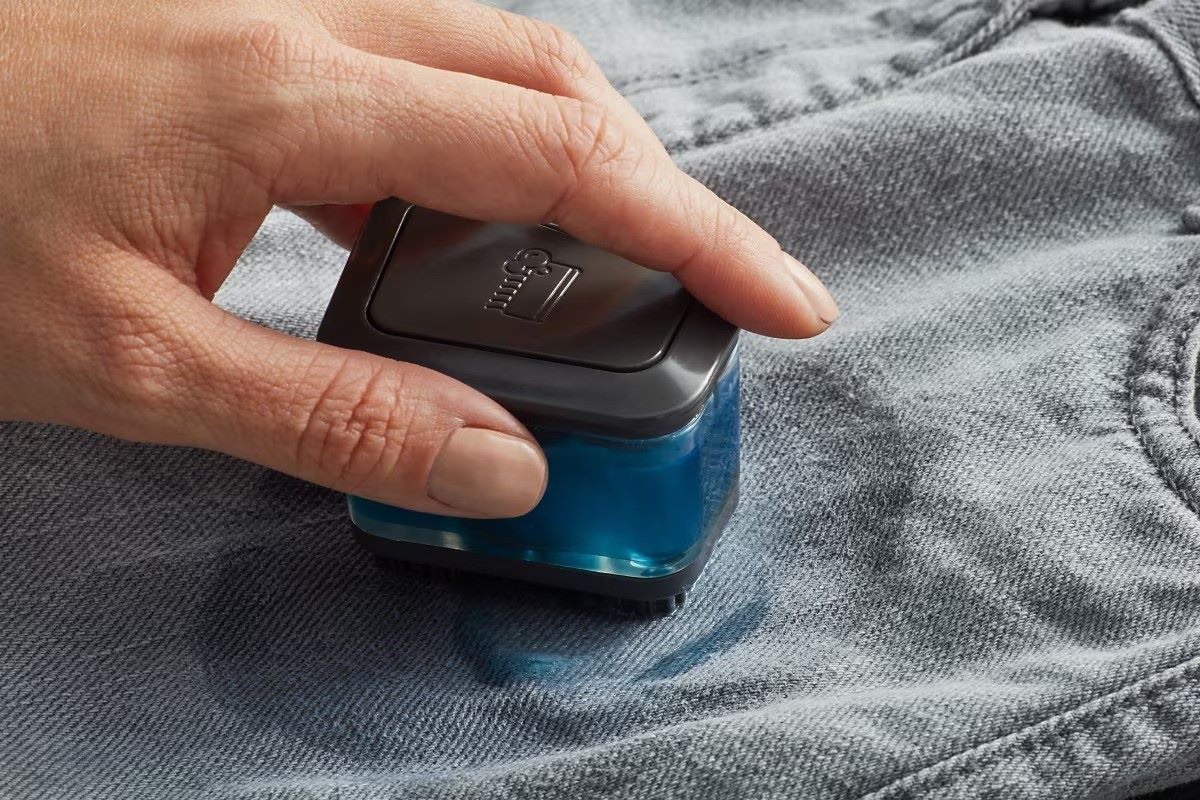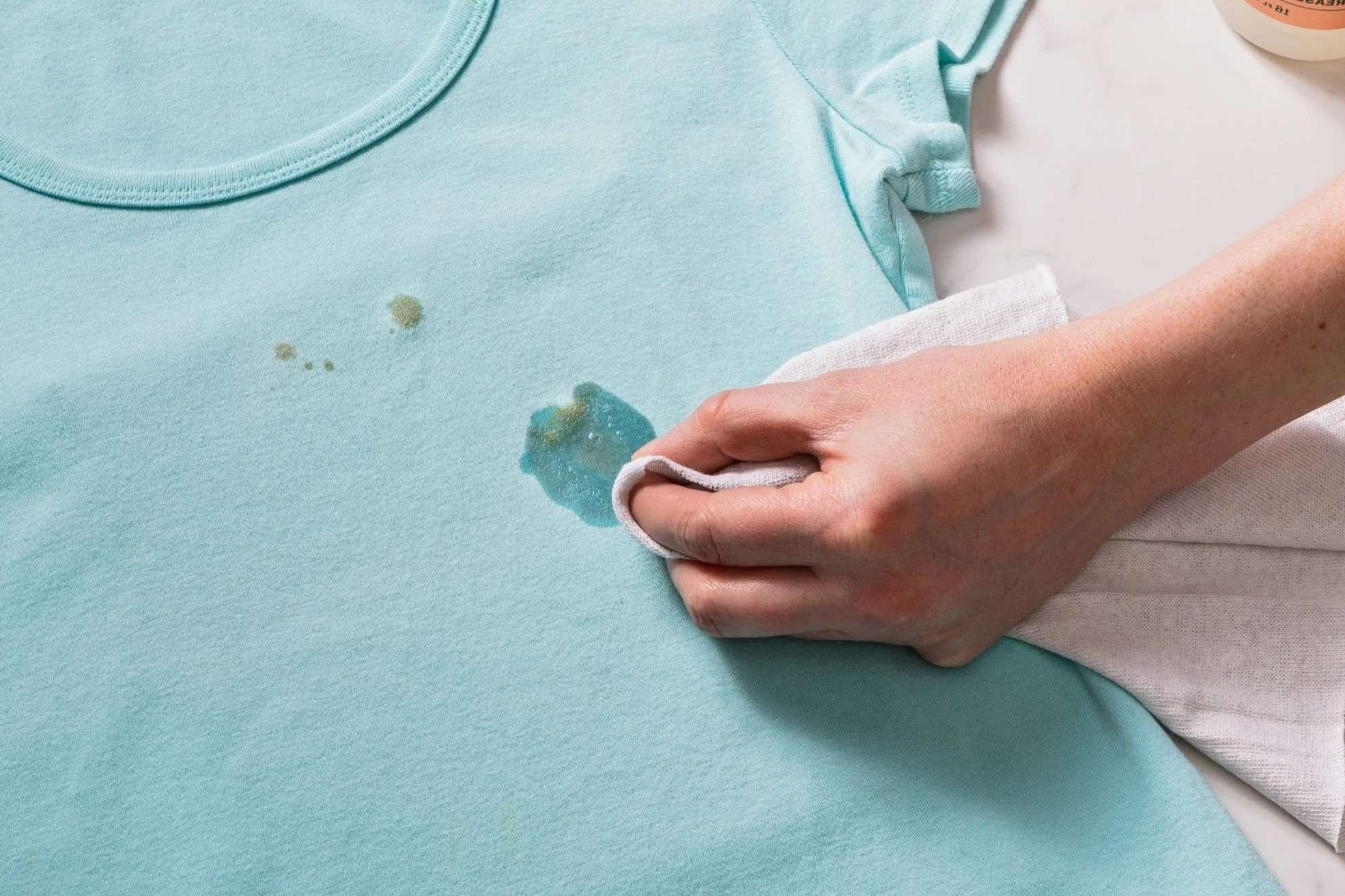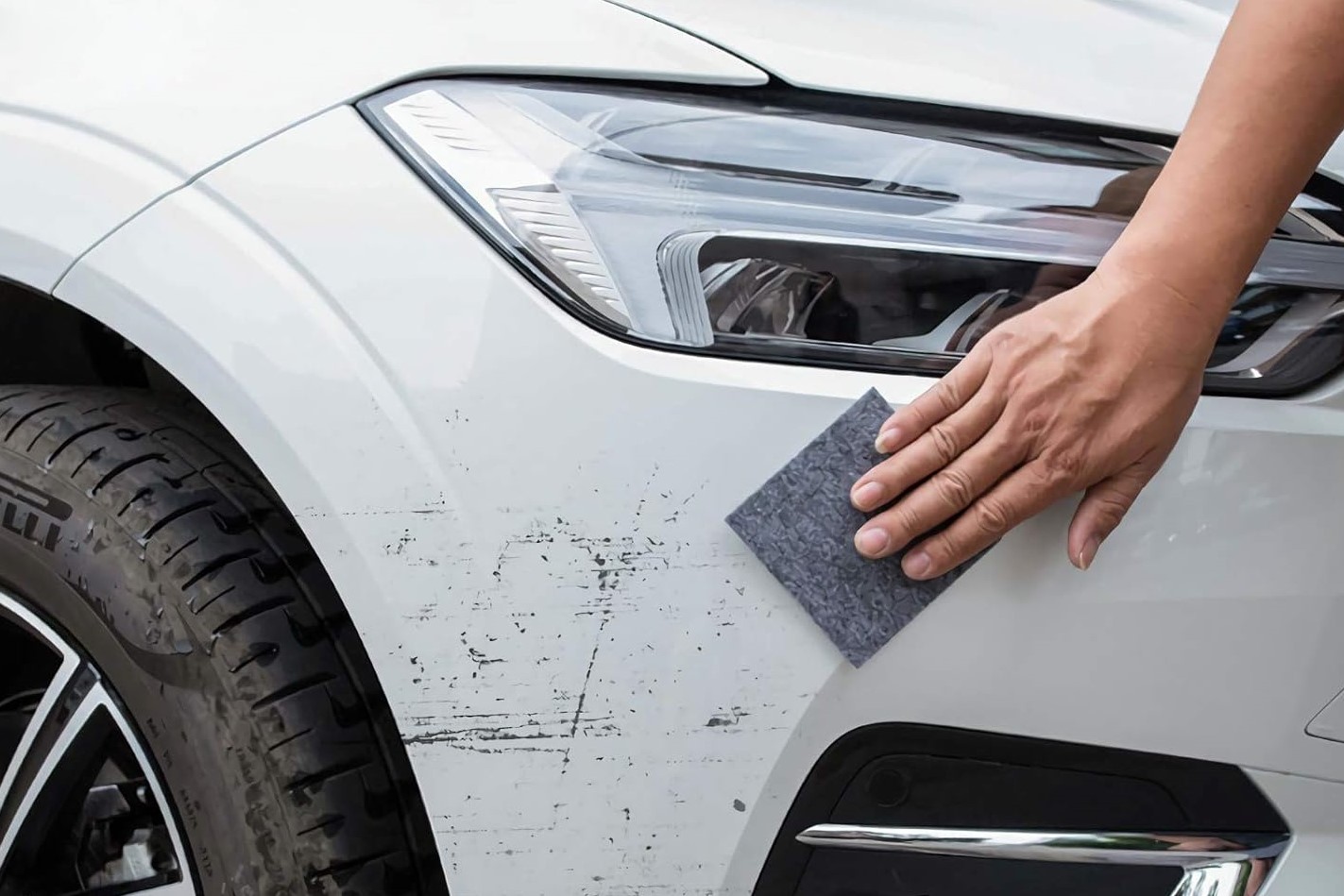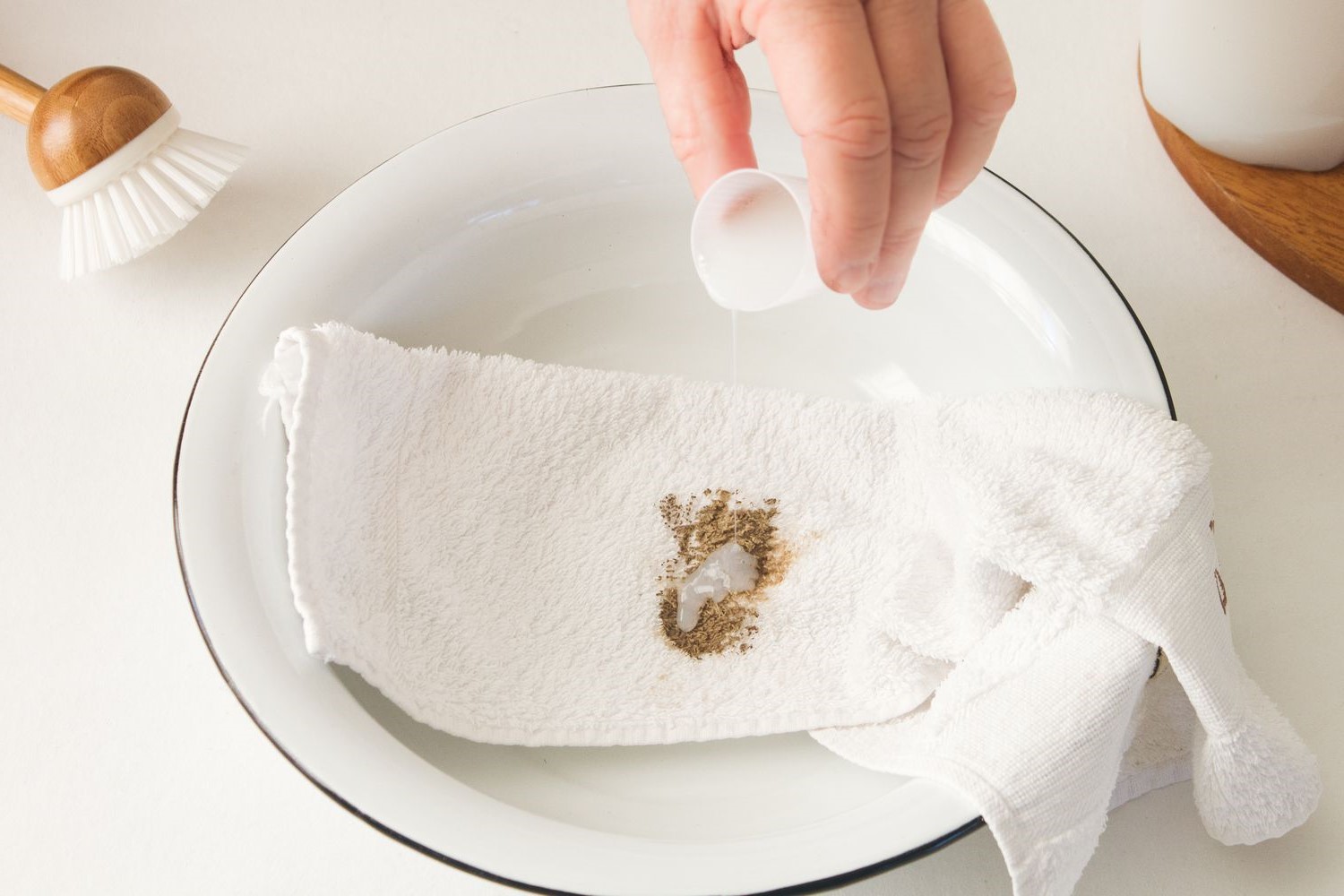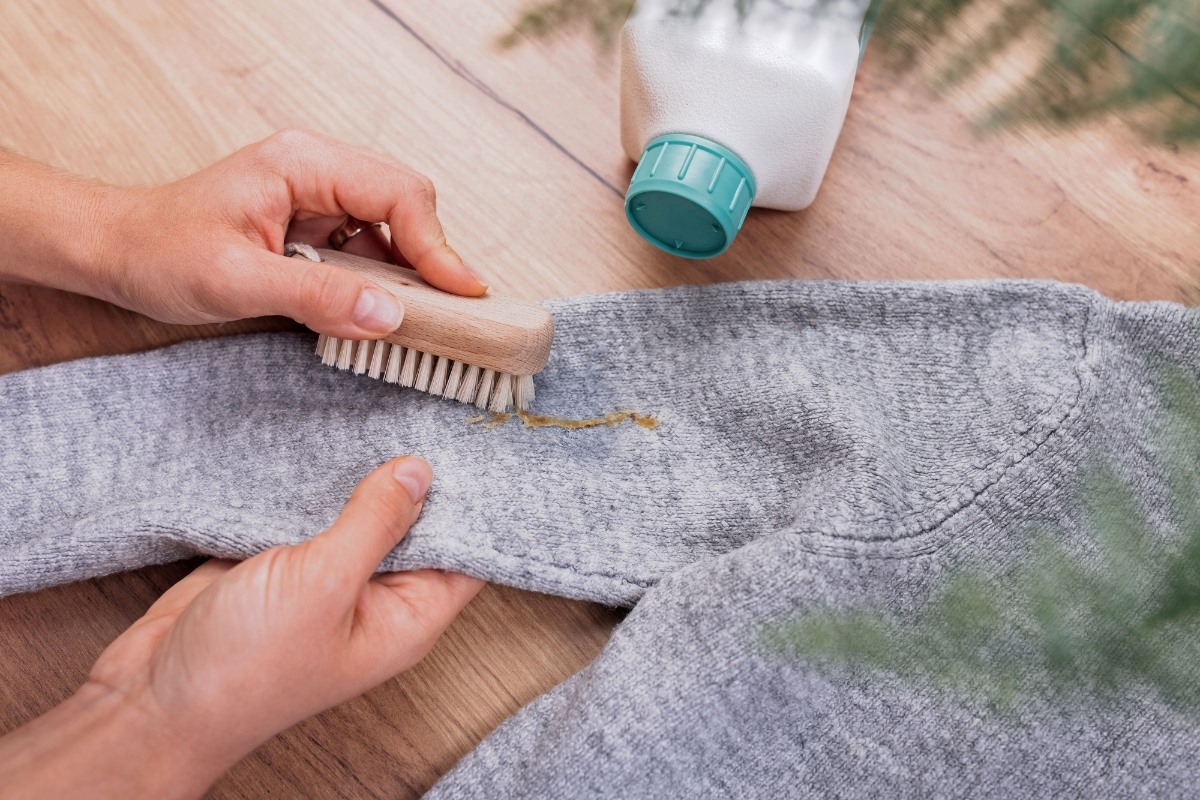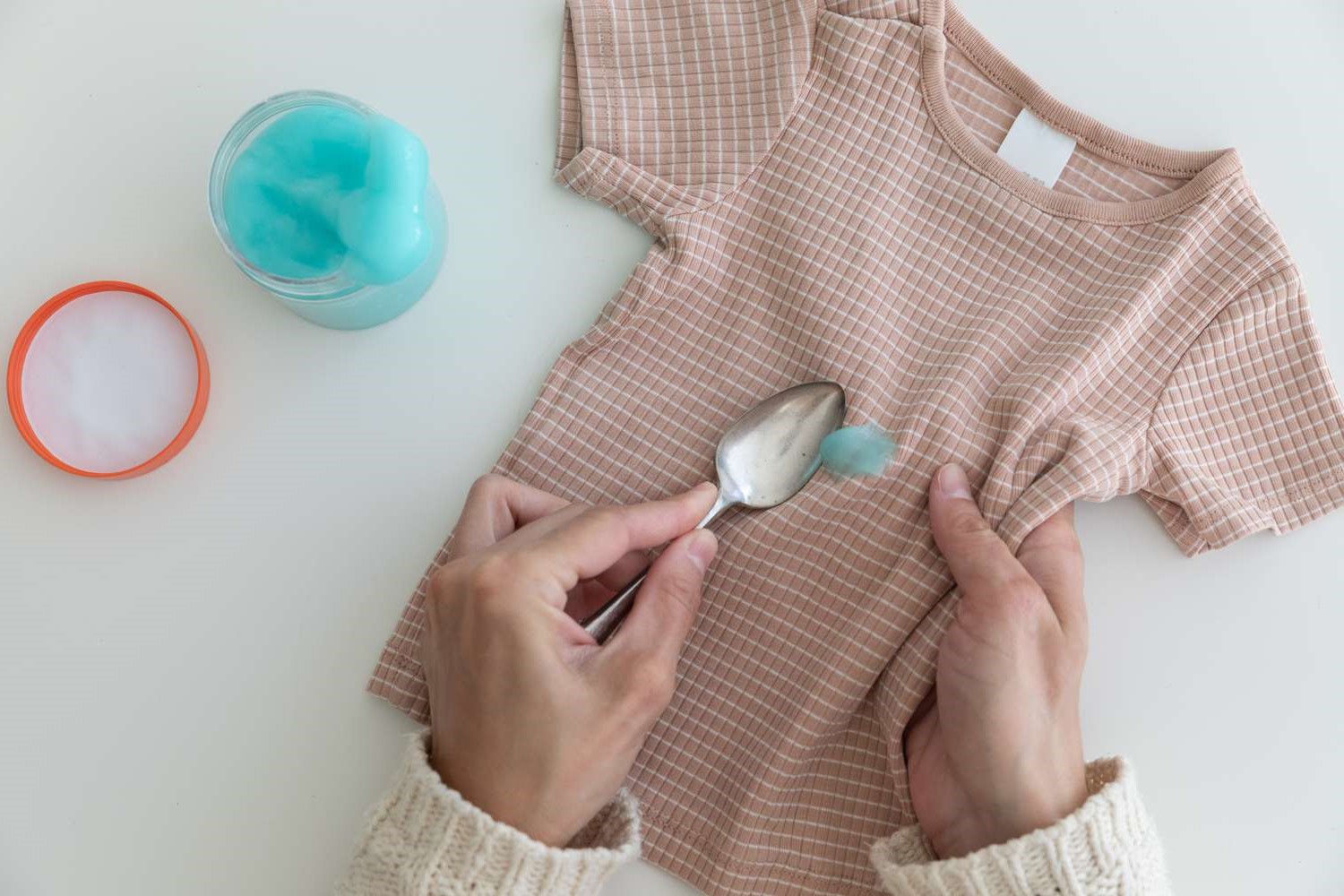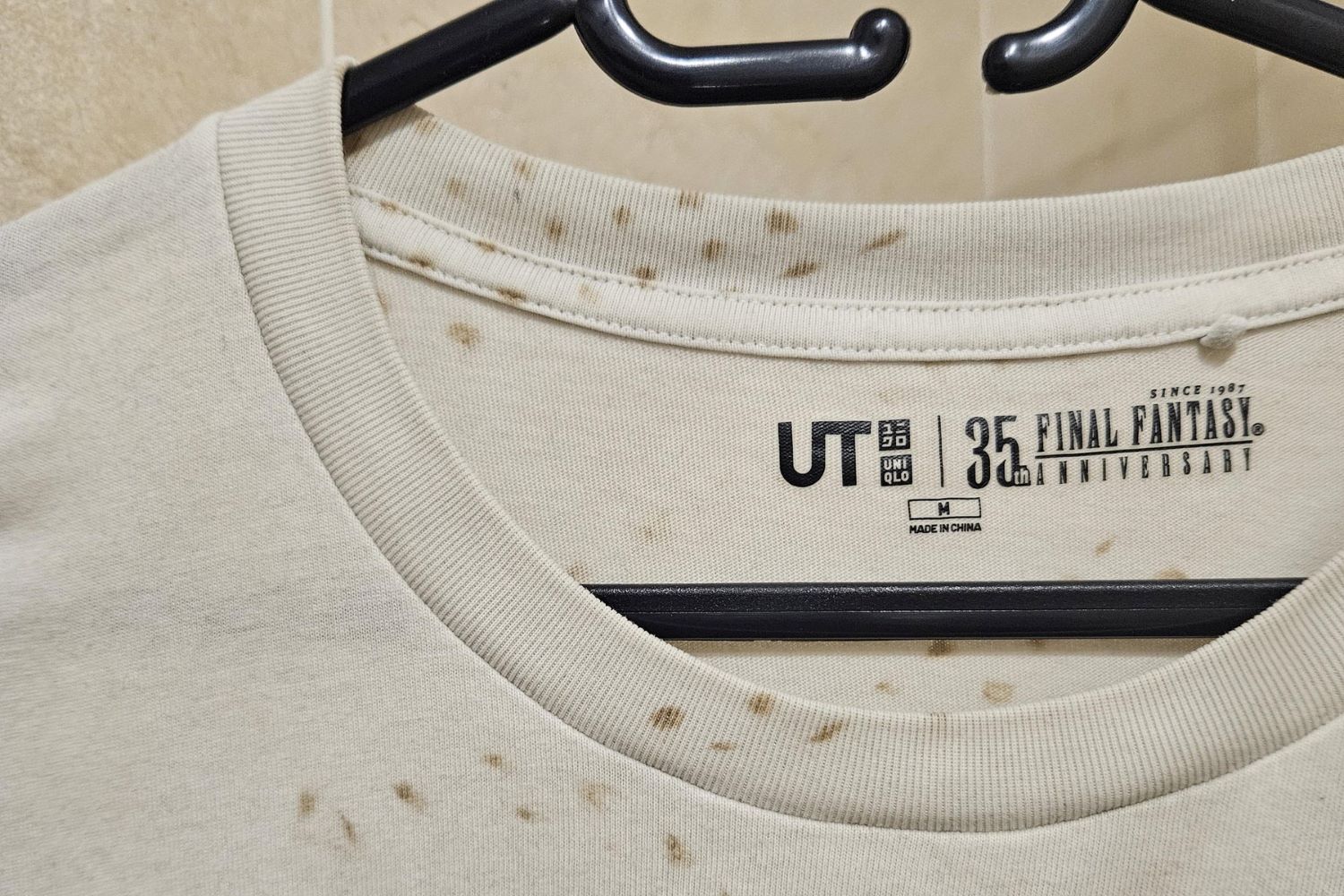Home>Automotive>How To Clean Cloth Car Seats
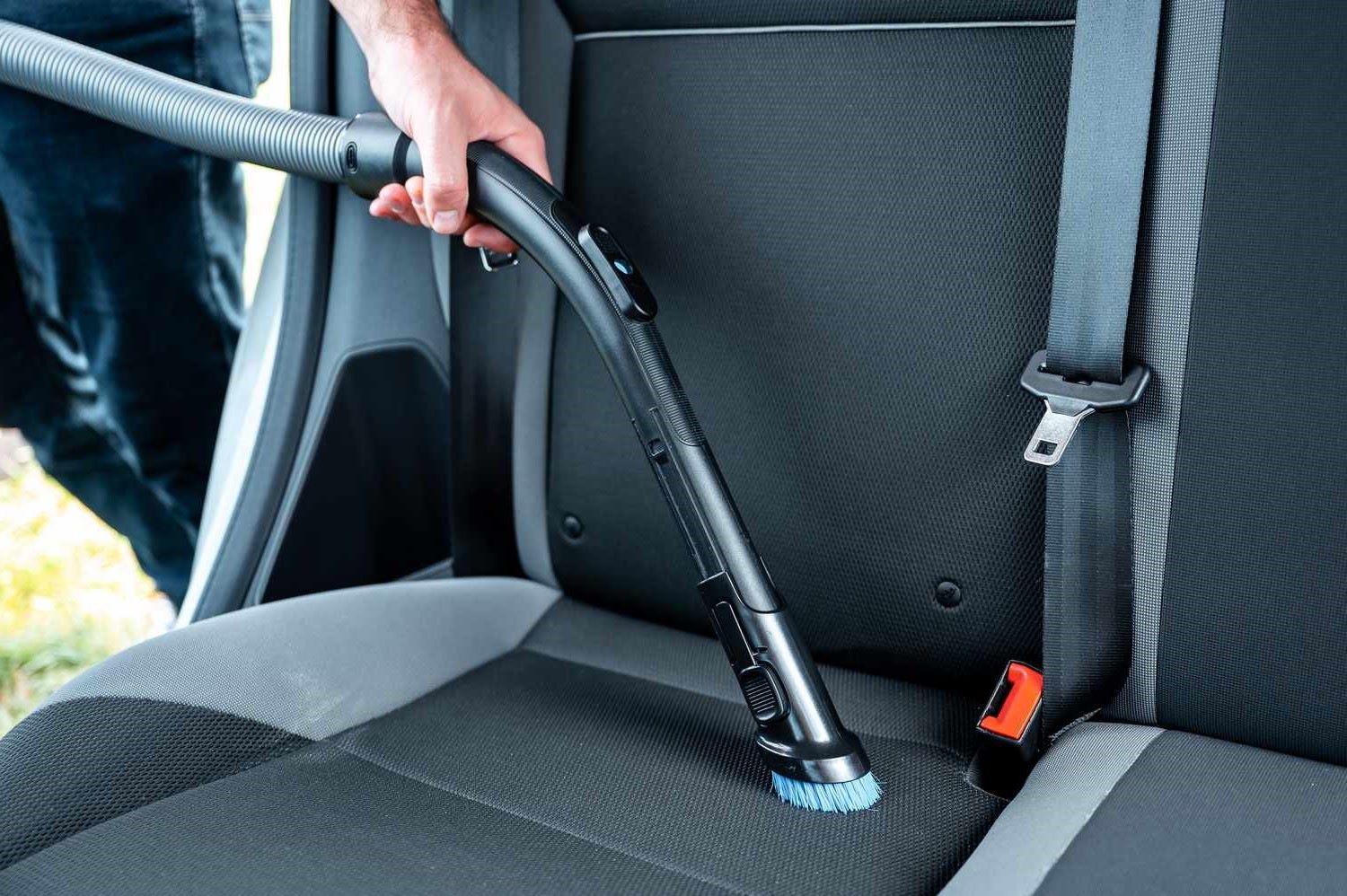

Automotive
How To Clean Cloth Car Seats
Published: February 26, 2024
Learn the best techniques for cleaning cloth car seats to keep your automotive interior looking fresh and well-maintained. Discover effective tips and products for automotive seat cleaning.
(Many of the links in this article redirect to a specific reviewed product. Your purchase of these products through affiliate links helps to generate commission for Noodls.com, at no extra cost. Learn more)
Table of Contents
Introduction
Cleaning cloth car seats is an essential part of maintaining the overall cleanliness and appearance of your vehicle's interior. Over time, dirt, dust, food crumbs, and other debris can accumulate on the fabric, leading to a less-than-pleasant driving experience. Additionally, spills and stains can occur, further diminishing the aesthetic appeal of the seats. By regularly cleaning your cloth car seats, you can ensure a fresh and inviting environment inside your vehicle while also prolonging the lifespan of the upholstery.
In this comprehensive guide, we will walk you through the step-by-step process of effectively cleaning your cloth car seats. Whether you're dealing with minor surface dirt or stubborn stains, these methods will help you restore your seats to their original cleanliness. From vacuuming and preparing the cleaning solution to spot testing and drying, each step is crucial in achieving optimal results.
By following these instructions, you can take pride in a well-maintained and visually appealing car interior. Not only will your passengers appreciate the clean and inviting atmosphere, but you'll also create a more enjoyable driving experience for yourself. So, let's dive into the details and learn how to revitalize your cloth car seats, leaving them looking and feeling as good as new.
Read more: How To Get Urine Out Of Car Seat
Step 1: Vacuuming the Seats
Before diving into the cleaning process, it's crucial to start with a thorough vacuuming of the cloth car seats. This initial step helps remove loose dirt, debris, and surface particles that have settled into the fabric. By eliminating these loose particles, you can prevent them from becoming further embedded during the cleaning process, ensuring a more effective and efficient overall result.
Why Vacuuming is Essential
Vacuuming serves as the foundation for the cleaning process, as it targets the visible and easily accessible dirt and debris. It's important to use a vacuum cleaner with a soft brush attachment to gently agitate the fabric and dislodge any trapped particles. This method is particularly effective for reaching into the crevices and seams of the seats, where dirt often accumulates unnoticed.
Technique for Effective Vacuuming
Start by adjusting the vacuum cleaner to a medium suction setting to avoid damaging the fabric. Begin at the top of the seats and work your way down, using overlapping strokes to ensure comprehensive coverage. Pay close attention to the areas where crumbs and dirt tend to collect, such as the seat creases and along the edges. Additionally, make sure to vacuum the seat backs and sides, as these areas are often overlooked but can accumulate significant debris.
Addressing Stubborn Debris
For stubborn debris or pet hair that may be deeply embedded in the fabric, consider using a specialized pet hair attachment or a rubber bristle brush to dislodge and lift the particles. These tools can be particularly effective in loosening stubborn pet hair from the fabric, making it easier to vacuum away.
Read more: How To Get Stains Out Of Car Seats
Regular Maintenance
To maintain the cleanliness of your cloth car seats, aim to incorporate regular vacuuming into your car care routine. By addressing loose dirt and debris on a consistent basis, you can prevent the accumulation of grime and minimize the need for intensive cleaning sessions in the future.
By starting with a meticulous vacuuming of the seats, you set the stage for a more successful and efficient cleaning process. This foundational step lays the groundwork for addressing deeper stains and spills, ultimately contributing to the revitalization of your cloth car seats.
Step 2: Preparing the Cleaning Solution
The next crucial step in the process of cleaning cloth car seats involves preparing an effective cleaning solution. This solution is essential for breaking down stains, lifting dirt, and refreshing the fabric, ultimately restoring the seats to a pristine condition. By selecting the appropriate cleaning agents and following the recommended dilution ratios, you can ensure that the solution is both powerful and safe for the fabric.
Choosing the Right Cleaning Agents
When preparing the cleaning solution, it's important to consider the specific needs of your cloth car seats. For general cleaning and maintenance, a mild detergent or upholstery cleaner is often suitable. Look for products that are specifically formulated for fabric upholstery and avoid using harsh chemicals that could potentially damage or discolor the fabric.
For tackling stubborn stains or heavily soiled areas, you may need to opt for a specialized stain remover or a cleaner designed to address specific types of stains, such as grease, ink, or food spills. Always check the product labels to confirm compatibility with your car's upholstery fabric and to ensure that the ingredients are safe for use in enclosed spaces.
Dilution Ratios and Mixing Instructions
Once you have selected the appropriate cleaning agent, carefully review the dilution ratios and mixing instructions provided by the manufacturer. Diluting the cleaning solution according to the recommended guidelines is crucial for achieving optimal results while safeguarding the integrity of the fabric.
In most cases, you will need to mix the cleaning agent with water to create the solution. Use a clean container or spray bottle to combine the ingredients, following the specified measurements to achieve the desired concentration. Thoroughly agitate the solution to ensure that the cleaning agent is evenly dispersed in the water, creating a uniform and effective mixture.
Read more: How To Get Sticker Residue Off Clothes
Considerations for Sensitive Fabrics
If your cloth car seats are made from delicate or sensitive fabrics, such as wool or silk blends, it's essential to exercise caution when selecting and preparing the cleaning solution. In these instances, it may be advisable to consult the vehicle's owner's manual or seek guidance from a professional detailer to determine the most suitable cleaning products and methods for preserving the fabric's integrity.
By taking the time to select the right cleaning agents, adhere to the recommended dilution ratios, and consider the specific needs of your cloth car seats, you can prepare a cleaning solution that is tailored to effectively address dirt, stains, and odors while safeguarding the fabric. This thoughtful approach sets the stage for the subsequent cleaning steps, ensuring that the fabric receives the care and attention it deserves.
Step 3: Spot Testing
Before proceeding with the comprehensive cleaning of your cloth car seats, it is imperative to conduct a spot test to assess the compatibility of the cleaning solution with the fabric. Spot testing serves as a precautionary measure to ensure that the cleaning agent does not cause discoloration, damage, or adverse reactions to the upholstery. By performing this preliminary assessment, you can mitigate the risk of unintended consequences and proceed with confidence in the cleaning process.
Importance of Spot Testing
Spot testing is a critical step that allows you to evaluate the impact of the cleaning solution on a small, inconspicuous area of the fabric. This method provides valuable insights into how the fabric will react to the cleaning agent, particularly in terms of colorfastness and overall resilience. Given the diverse nature of upholstery materials and the variability in fabric dyes and finishes, spot testing is essential for minimizing the potential for undesirable outcomes.
Conducting the Spot Test
To conduct a spot test, identify a discreet area of the cloth car seats, such as the underside or a concealed section of the fabric. It is important to choose a spot that is representative of the overall upholstery and is unlikely to be prominently visible. Once the test area is selected, apply a small amount of the diluted cleaning solution to the fabric using a clean, white cloth or sponge.
Gently blot the solution onto the fabric, ensuring that it does not saturate the material excessively. Allow the spot to air dry completely, and then assess the test area for any signs of discoloration, fading, or adverse reactions. If the fabric exhibits any negative effects, such as color alteration or texture changes, refrain from proceeding with the full cleaning process using the tested solution.
Read more: How To Get Paint Off Leather Seats
Interpreting the Results
Upon completing the spot test, carefully evaluate the test area to determine the impact of the cleaning solution. Look for any noticeable changes in color, texture, or appearance of the fabric. If the test area remains unaffected and the fabric retains its original characteristics, it is a positive indication that the cleaning solution is safe for use on the cloth car seats.
Adjustments and Alternatives
In the event that the spot test yields unfavorable results, it is crucial to explore alternative cleaning agents or adjust the dilution ratios to minimize the risk of adverse effects. Additionally, for particularly delicate or sensitive fabrics, seeking guidance from professional detailers or upholstery specialists can provide valuable insights into alternative cleaning approaches that are better suited to the specific fabric composition.
By diligently conducting a spot test and interpreting the results, you can make informed decisions regarding the suitability of the cleaning solution for your cloth car seats. This proactive measure empowers you to safeguard the integrity of the upholstery and proceed with confidence, knowing that the chosen cleaning agent is compatible with the fabric.
Step 4: Cleaning the Seats
With the preliminary steps of vacuuming, preparing the cleaning solution, and spot testing completed, you are now ready to embark on the pivotal stage of cleaning your cloth car seats. This step involves the methodical application of the prepared cleaning solution to effectively address stains, dirt, and odors embedded in the fabric. By following a systematic approach and employing gentle yet thorough techniques, you can revitalize the appearance of your seats and restore them to a fresh and inviting state.
Application Techniques
Begin by applying the diluted cleaning solution to the cloth car seats using a clean microfiber cloth or soft-bristled brush. It is essential to work in small sections, focusing on one area at a time to ensure thorough coverage and attention to detail. Gently blot the solution onto the fabric, avoiding excessive saturation, and allow it to penetrate the surface to begin breaking down stains and lifting dirt particles.
For more stubborn stains or heavily soiled areas, gently agitate the cleaning solution into the fabric using a soft-bristled brush, working in circular motions to dislodge the embedded debris. Exercise caution to avoid aggressive scrubbing, as this can potentially damage the fabric or spread the stains further. By employing gentle yet deliberate movements, you can effectively target problem areas while preserving the integrity of the upholstery.
Read more: How To Get Smoke Smell Out Of Clothes
Addressing Stubborn Stains
When encountering persistent stains, such as coffee spills or ink marks, it may be necessary to apply additional cleaning solution and gently blot the area with a clean cloth to lift the stain. Avoid rubbing the fabric vigorously, as this can exacerbate the staining and potentially compromise the appearance of the seats. Instead, maintain a patient and methodical approach, allowing the cleaning solution to work its magic while minimizing the risk of causing further damage.
Rinsing and Removing Residue
After the cleaning solution has been applied and stains have been addressed, it is important to thoroughly rinse the fabric to remove any residual cleaning agents. Dampen a clean cloth with water and gently blot the seats to lift away the remaining solution and residue. This step helps ensure that no cleaning product is left behind, preventing potential discoloration or stiffness in the fabric once it dries.
Drying the Seats
Following the cleaning process, allow the cloth car seats to air dry naturally. Open the vehicle's windows or doors to promote air circulation and expedite the drying process. Avoid using artificial heat sources or direct sunlight to dry the seats, as excessive heat can cause the fabric to shrink or become distorted. Once the seats are completely dry, gently run a vacuum over the fabric to fluff and restore the nap, leaving the upholstery looking refreshed and rejuvenated.
By meticulously following these cleaning techniques and exercising patience and care throughout the process, you can effectively cleanse your cloth car seats and breathe new life into their appearance. This methodical approach ensures that the fabric receives the attention it deserves, resulting in revitalized seats that enhance the overall aesthetic and comfort of your vehicle's interior.
Step 5: Drying the Seats
Properly drying the cloth car seats is a crucial final step in the cleaning process, ensuring that the fabric is thoroughly dried and restored to its optimal condition. By following the appropriate drying techniques, you can prevent potential issues such as mold growth, musty odors, and fabric damage, ultimately preserving the cleanliness and integrity of the seats.
Read more: How To Clean Vomit From Car
Air Drying Method
After the cleaning process is complete, it is essential to allow the cloth car seats to air dry naturally. Open all the vehicle's windows or doors to facilitate air circulation, promoting the evaporation of moisture from the fabric. This method allows the seats to dry gradually and evenly, minimizing the risk of excessive moisture retention within the upholstery.
Avoiding Heat Sources
It is important to refrain from using artificial heat sources, such as hair dryers or heat guns, to expedite the drying process. Exposing the fabric to high heat can lead to shrinkage, distortion, or damage to the upholstery fibers. Additionally, direct sunlight should be avoided, as prolonged exposure to UV rays can cause fading and deterioration of the fabric over time.
Patience and Natural Airflow
Exercise patience during the drying process, allowing the cloth car seats to air dry at their own pace. Depending on the ambient humidity and airflow conditions, the drying time may vary. By prioritizing natural airflow and ventilation, you can ensure that the fabric dries thoroughly without compromising its structural integrity or appearance.
Fluffing the Fabric
Once the seats are completely dry, gently run a vacuum cleaner with a soft brush attachment over the fabric. This step helps fluff the nap of the upholstery, restoring its texture and appearance. By lightly vacuuming the seats, you can remove any residual particles and ensure that the fabric regains its plush and inviting feel.
Read more: How To Remove Toilet Seat
Upholstery Protection
To maintain the cleanliness and freshness of the cloth car seats, consider applying a fabric protectant or upholstery conditioner after the cleaning and drying process. These products can help repel future stains, minimize odors, and preserve the fabric's resilience. Always follow the manufacturer's instructions when applying fabric protectants to ensure optimal results.
By adhering to these meticulous drying techniques, you can effectively complete the cleaning process and ensure that your cloth car seats are restored to a clean, dry, and inviting state. This attention to detail not only enhances the visual appeal of the interior but also contributes to a comfortable and enjoyable driving experience for you and your passengers.
Conclusion
In conclusion, maintaining clean and well-kept cloth car seats is not only a matter of aesthetics but also a fundamental aspect of ensuring a pleasant and comfortable driving experience. By following the comprehensive cleaning process outlined in this guide, you can effectively revitalize your cloth car seats, removing dirt, stains, and odors to restore them to a fresh and inviting state.
The initial step of vacuuming the seats serves as a foundational practice, allowing you to eliminate loose debris and prepare the fabric for the subsequent cleaning stages. This meticulous approach sets the stage for addressing deeper stains and spills, ultimately contributing to the revitalization of your cloth car seats.
Preparing the cleaning solution is a critical phase that demands careful consideration of the fabric's specific needs. By selecting the appropriate cleaning agents, adhering to recommended dilution ratios, and conducting spot testing, you can ensure that the cleaning solution is both effective and safe for the upholstery.
The methodical application of the cleaning solution, coupled with gentle yet deliberate techniques, allows you to address stains and dirt embedded in the fabric without compromising its integrity. By exercising patience and care throughout the process, you can effectively cleanse your cloth car seats and breathe new life into their appearance.
Properly drying the seats is a crucial final step, ensuring that the fabric is thoroughly dried and restored to its optimal condition. By following the appropriate drying techniques and prioritizing natural airflow, you can prevent potential issues such as mold growth, musty odors, and fabric damage, ultimately preserving the cleanliness and integrity of the seats.
Incorporating regular maintenance and protective measures, such as applying fabric protectants, can further prolong the cleanliness and freshness of the cloth car seats, allowing you to enjoy a well-maintained and visually appealing car interior for the long term.
By embracing these practices and investing the necessary time and attention into caring for your cloth car seats, you can take pride in a clean, inviting, and comfortable driving environment. Whether you're commuting to work, embarking on a road trip, or simply running errands, the cleanliness and freshness of your cloth car seats will enhance the overall enjoyment of your time spent behind the wheel.
Ultimately, by following the step-by-step process outlined in this guide and infusing your cleaning routine with diligence and care, you can ensure that your cloth car seats remain a source of pride and comfort, reflecting the overall cleanliness and attention to detail that you bring to your vehicle.
